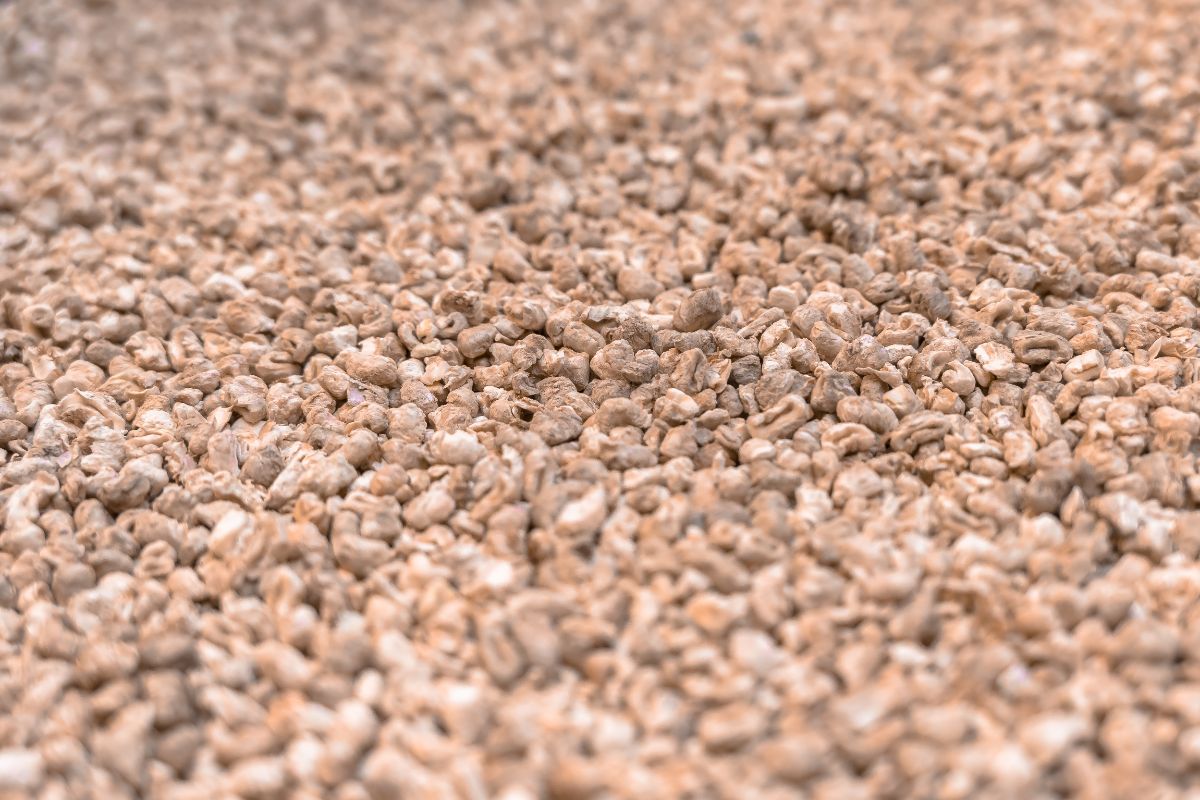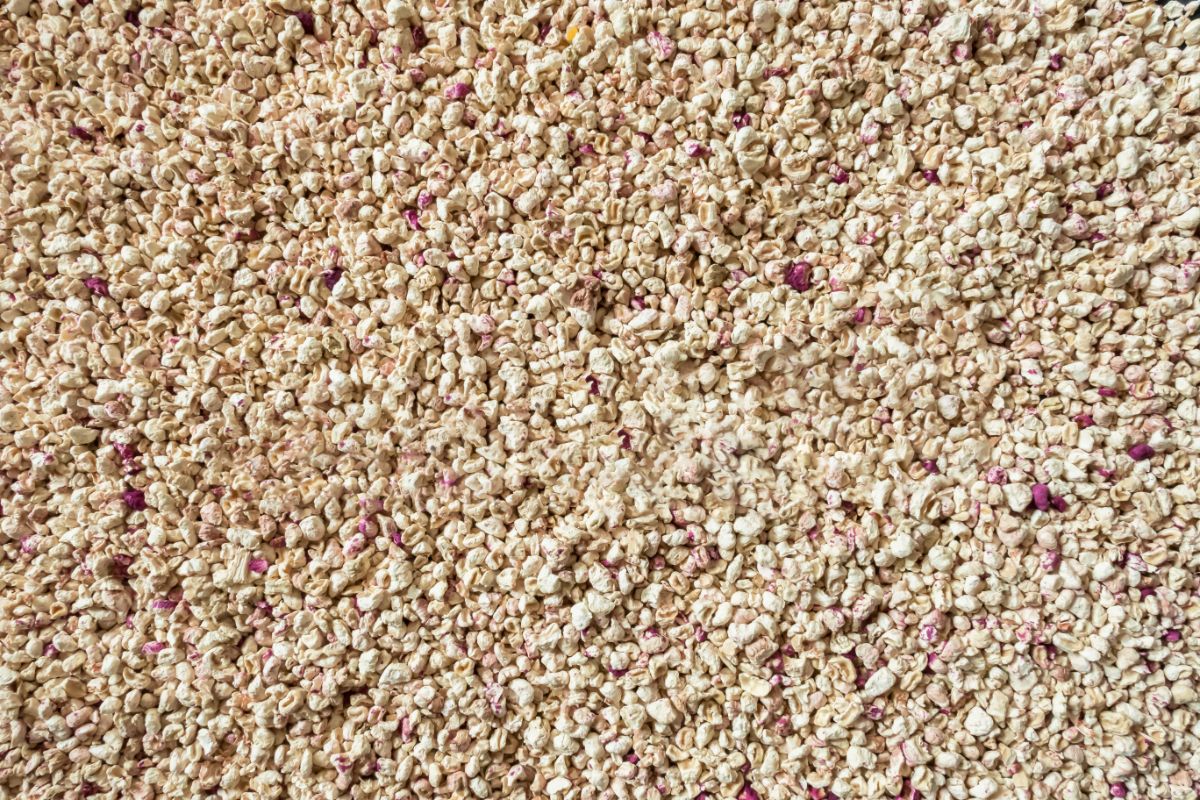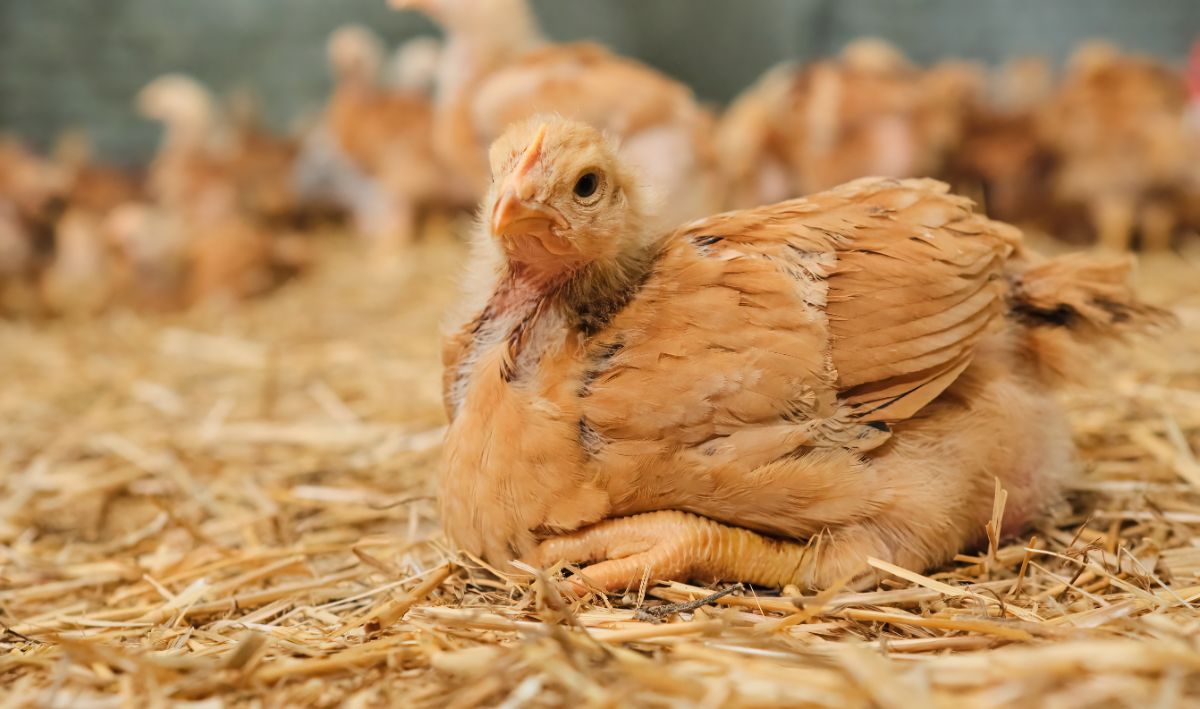
If you’re thinking about using corn cob bedding for chickens, I would think twice as there are much better - and safer - bedding materials for chickens.
Corn cob is sold as somewhat of an all-purpose pet bedding, and I see it marketed towards birds - but it’s really not ideal.
Corn cob can become saturated with moisture and is hard to dry out, resulting in it growing mold and other harmful bacteria.
There have also been numerous studies showing corn cob bedding can have dangerous levels of endotoxins which are toxins that are released when a substance disintegrates.
Jump to:
What Is Corn Cob Bedding Made Of?
It’s no real surprise, but corn cob bedding is made from ground-down corn cobs.
So, what is corn cob? It’s the central cylindrical woody part of the maize ear to which the grains are attached.
Corn cobs are used for everything from animal bedding to abrasive cleaning materials and even biofuel!
As long as you’re buying corn cob bedding designed for pets it should be free from any artificial dyes or fragrances which is the important thing.
What Is Corn Cob Bedding Used For?

Corn cob bedding is commonly used as bedding for a number of rodents and small animals.
I’ve seen it used for mice, rats, chinchillas, guinea pigs, rabbits, and birds like parrots and chickens.
A layer is added into the cages of rodents or the floor of a chicken coop, and as it gets dirty you can scoop out the soiled cobs and replace them.
The primary reason corn cob bedding is used as bedding material is that it has a very high absorption capacity.
This means it easily absorbs all the mess animals make, and in theory, it should be easy to scoop out and change the soiled cobs.
The problem, as I’ll be explaining, however, is that it’s a coarse material and it’s prone to harboring bacteria due to being so absorbent.
Here’s Why Corn Cob Is Not a Good Chicken Bedding
The main issue with corn cob is that it’s too absorbent to be used as chicken bedding.
It’s fine for smaller animals and rodents that produce less poop, but as you’ll know if you’re raising chickens - they poop a lot!
Corn cobs can quickly become too saturated, and in turn mold and other bacteria can build up.
I’ve also heard from some owners that cobs are too big and rough for their chicken’s little feet.
It can be painful or at the very least uncomfortable for chickens to walk on, and cobs don’t soften or break down before being thrown out.
Bantams, in particular, and other small breeds of chicken will struggle to walk on corn cobs. For this reason, pine shavings or industrial sand is a much better choice for chickens.
What Is the Warmest Bedding for Chickens?
The farmyard favorite; straw is one of - if not the - warmest bedding materials for chickens.
Straw is recommended by animal welfare organizations for any pets spending time outside due to how well it retains heat and insulates warmth.
It’s also great at wicking away and evaporating moisture is easy to scoop out and replace, and is inexpensive.
A little tip; make sure you’re not confusing straw with hay.
Both look similar, but straw is a byproduct of harvesting grain, and hay is the crop being harvested that is fed to cattle.
Unlike straw, hay gets damp easily and can cause fungal spores to grow similar to how corn cob can.
Straw is a great bedding material for chickens. It’s low dust, insulates well, and you’ll see that chickens love scratching around and moving bits of straw about.
What Is the Best Bedding for Chickens?

Three of the best bedding materials to use for chickens of all sizes and ages are; sand, wood shavings, and straw.
I have to say, in my experience, I would say most backyard chicken owners choose to use straw as bedding. It’s just simply the most versatile material to use.
Here is one of the most popular chicken beddings available on Amazon.com. It’s an all-natural, biodegradable chopped straw and is perfect for chicken bedding.
Standlee Chopping Straw Chicken Bedding

Click here to see the latest price and availability of this straw bedding for chickens on Amazon.com!
Some owners prefer sand due to its low insect and pathogen levels, and pine shavings are popular due to how affordable and absorbent they are.
You may end up having to try more than one bedding type to see how your chickens respond to it.
After all, it’s their bedding and it’s their opinion that matters! Your part is just to provide a safe option and keep their coop and run nice and clean.
Can You Use Corn Cob Bedding for Chicks?
I definitely wouldn’t use corn cob bedding in a brooder or wherever you’re raising baby chicks.
I would be very concerned about chicks pecking at/trying to eat cob and potentially choking. If not choking, it’s certainly not something you want them eating.
Straw or pine shavings are the two types of bedding most commonly used with chicks, so I recommend going with either of these.
In Summary
Hopefully, you’re now aware of the risks and general cons of using corn cob bedding for chickens and will switch over to straw or wood shavings if you’re already using cobs!
If you’ve been using corn cob and you’re sure it’s working out well for you and your chickens, just be sure it’s 100% natural and free from any fragrances or additives.
Resources
Endotoxin, Coliform, and Dust Levels of Corn Cob Bedding - ncbi.nln.nih





